Opinion & Analysis
The Facts About Single Length Irons
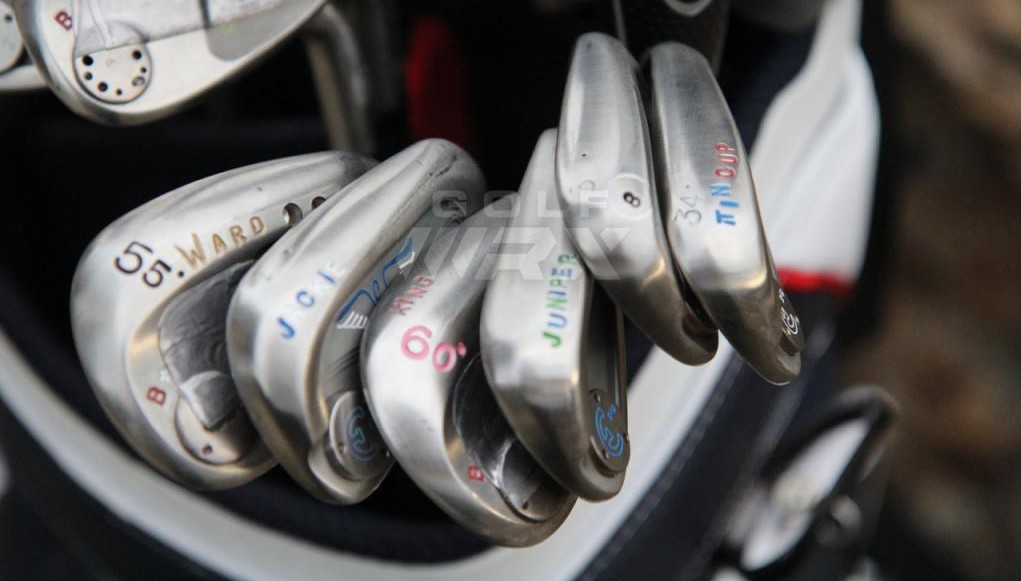
There has been a LOT of discussion lately about single-length iron sets. So much, in fact, that as a club builder and fitter single-length irons have become a daily topic of conversation.
Most of this buzz about single-length irons has been created by reigning U.S Amateur and NCAA Division I Individual champion Bryson DeChambeau, who has been very successful using a custom set of single-length irons made by Edel, a boutique equipment company in Texas.
Related: Bryson DeChambeau WITB 2016
Edel isn’t the first company to build a set of single-length irons. Tommy Armour built and marketed a set called the EQL’s in the 80’s, and there have been a few other niche companies who have been building these sets for a long time, including One Iron Golf. Recently, Tom Wishon and Jaacob Bowden released a set of single-length irons. Named Sterling Irons, they’re designed to be built shorter than others. At 36.5 inches, they’re each about the length of an 8-iron.
Related: Learn more about Sterling Irons
All of the sets listed above have one thing in common; they were designed with the sole purpose of being built to a single length. With this trend gaining more interest from the general golfing public the most popular questions are:
- Can single length irons work for me?
- Can I make my current set into a single-length set?
I’m going to explain the differences between a standard set of irons and single-length irons, why it’s difficult to convert a standard set of irons to single length and what is needed to make sure proper gapping is achieved throughout the set.
According to DeChambeau and the team at Edel, his set took many attempts to get just right. And as a club builder who is getting requests for this type of set, it’s difficult to explain the small nuances involved to golfers, especially those players looking to do this to either an existing set or to a new one built from scratch using standard OEM components. It’s also difficult to fit a golfer for this type of set because of the cost associated with having enough club heads of varying lofts to properly fit for distance gapping.
The other piece of information that I don’t believe has been mentioned enough as it pertains to the average golfer is that DeChambeau is a finely tuned athlete who swings his 45-inch driver at more than 120 mph. Most club players can only swing that fast in their dreams, and DeChambeau’s speed gives him a distinct advantage with his irons.
If you give a golfer five clubs of the same length, shaft flex, total weight, and swing weight, they will swing them at almost exactly the same speed. Give that golfer a traditional set of irons that are built with shafts that get approximately 0.5-inches longer as the iron number decreases (with the same shaft, shaft flex, swing weight and a decreasing head weight of 7-to-10 grams per club), however, and they will likely swing each club 2-3 mph faster as they move up the set.
The increased clubhead speed translates into faster ball speeds in the longer irons, which is needed to maintain a consistent peak height from the lower-lofted clubs, also know as a consistent flight window. Smash Factor also slowly increases, because the reduced loft will transfer more energy into the ball (the contact is less “glancing” or oblique), creating faster ball speeds with the longer clubs.
Distance gapping can become an issue in the longer clubs with a single-length iron set, because swing speed does not stay the same as loft is reduced. That’s why DeChambeau’s custom Edel set uses bigger loft gaps (5 degrees) in the longer clubs. Wishon’s Sterling irons do not have this design, but he addressed the issue by making the faces of his long irons “hotter,” which has the same effect.
Here is where things become very difficult from a building perspective. Standard head weights for irons are not designed to be built to the same length. They are engineered for a company’s specific length progression, generally 0.5 inches between clubs.
The chart below demonstrates the difference in club head mass between standard head weights of a set built to roughly D3 and a set of single-length irons.
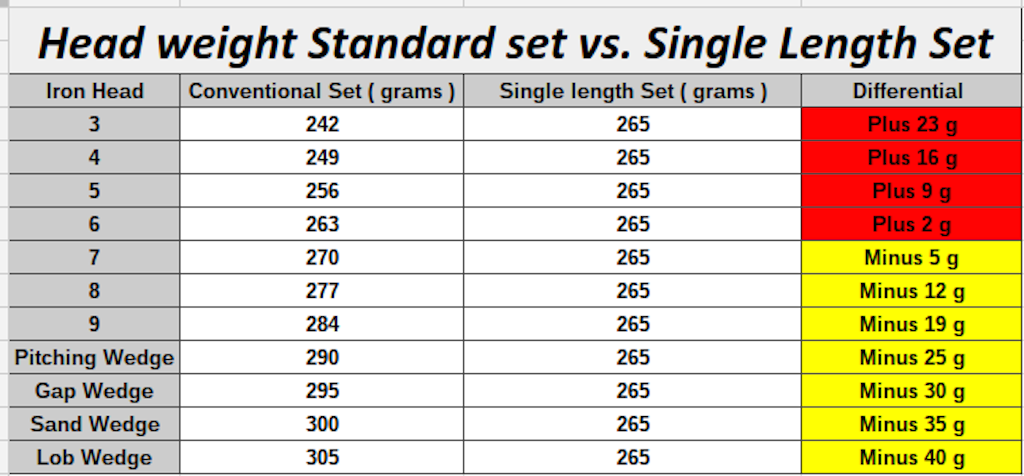 Also, the lies and loft of standard irons are not designed to be bent past a certain point, which can cause detriment to the playing characteristics of the club head.
Also, the lies and loft of standard irons are not designed to be bent past a certain point, which can cause detriment to the playing characteristics of the club head.
DeChambeau plays his entire set at 73-degree lie angle, which is more upright than the lie angle of most off-the-rack putters! Trying to bend a set of standard iron heads to these angles would either totally mar the hosels or cause them to break, especially considering many irons now are made of multiple materials and advanced constructions. DeChambeau’s Edel irons, on the other hand, are forged and more easily bent.
It should also be noted that DeChambeau’s irons are manufactured so there is no negative effect on performance. And his extremely upright lie angles are the result of his unique swing mechanics, and are not necessary to use a single-length iron set.
The chart below demonstrates standard lie angles vs. DeChambeau’s Clubs.
Going back to the issue of gapping, with a set of single-length clubs, lofts need to be adjusted accordingly to make sure that golfers have proper yardage gaps between clubs. With any player, the gapping will depending on swing speed.
The Trackman data below shows some interesting information based my testing a set of single-length irons (37.5 inches) and a set of irons built to standard lengths with frequency matched shafts, matching swing weights, and built in 0.5-inch increments.
The conclusion is that single-length irons might be the perfect solution to creating more consistency in your golf game, but just like buying a new driver or standard set of irons, be sure to visit a proper club fitter. It will take some time to find the right components to fit your needs.
- LIKE282
- LEGIT55
- WOW18
- LOL8
- IDHT10
- FLOP5
- OB5
- SHANK18
19th Hole
Vincenzi’s LIV Golf Singapore betting preview: Course specialist ready to thrive once again

After another strong showing in Australia, LIV Golf will head to Sentosa Golf Club in Singapore looking to build off of what was undoubtedly their best event to date.
Sentosa Golf Club sits on the southern tip of Singapore and is one of the most beautiful courses in the world. The course is more than just incredible scenically; it was also rated 55th in Golf Digest’s top-100 courses in 2022-2023 and has been consistently regarded as one of the best courses in Asia. Prior to being part of the LIV rotation, the course hosted the Singapore Open every year since 2005.
Sentosa Golf Club is a par 71 measuring 7,406 yards. The course will require precise ball striking and some length off the tee. It’s possible to go low due to the pristine conditions, but there are also plenty of hazards and difficult spots on the course that can bring double bogey into play in a hurry. The Bermudagrass greens are perfectly manicured, and the course has spent millions on the sub-air system to keep the greens rolling fast. I spoke to Asian Tour player, Travis Smyth, who described the greens as “the best [he’s] ever played.”
Davis Love III, who competed in a Singapore Open in 2019, also gushed over the condition of the golf course.
“I love the greens. They are fabulous,” the 21-time PGA Tour winner said.
Love III also spoke about other aspects of the golf course.
“The greens are great; the fairways are perfect. It is a wonderful course, and it’s tricky off the tee.”
“It’s a long golf course, and you get some long iron shots. It takes somebody hitting it great to hit every green even though they are big.”
As Love III said, the course can be difficult off the tee due to the length of the course and the trouble looming around every corner. It will take a terrific ball striking week to win at Sentosa Golf Club.
In his pre-tournament press conference last season, Phil Mickelson echoed many of the same sentiments.
“To play Sentosa effectively, you’re going to have a lot of shots from 160 to 210, a lot of full 6-, 7-, 8-iron shots, and you need to hit those really well and you need to drive the ball well.”
Golfers who excel from tee to green and can dial in their longer irons will have a massive advantage this week.
Stat Leaders at LIV Golf Adelaide:
Fairways Hit
1.) Louis Oosthuizen
2.) Anirban Lahiri
3.) Jon Rahm
4.) Brendan Steele
5.) Cameron Tringale
Greens in Regulation
1.) Brooks Koepka
2.) Brendan Steele
3.) Dean Burmester
4.) Cameron Tringale
5.) Anirban Lahiri
Birdies Made
1.) Brendan Steele
2.) Dean Burmester
3.) Thomas Pieters
4.) Patrick Reed
5.) Carlos Ortiz
LIV Golf Individual Standings:
1.) Joaquin Niemann
2.) Jon Rahm
3.) Dean Burmester
4.) Louis Oosthuizen
5.) Abraham Ancer
LIV Golf Team Standings:
1.) Crushers
2.) Legion XIII
3.) Torque
4.) Stinger GC
5.) Ripper GC
LIV Golf Singapore Picks
Sergio Garcia +3000 (DraftKings)
Sergio Garcia is no stranger to Sentosa Golf Club. The Spaniard won the Singapore Open in 2018 by five strokes and lost in a playoff at LIV Singapore last year to scorching hot Talor Gooch. Looking at the course setup, it’s no surprise that a player like Sergio has played incredible golf here. He’s long off the tee and is one of the better long iron players in the world when he’s in form. Garcia is also statistically a much better putter on Bermudagrass than he is on other putting surfaces. He’s putt extremely well on Sentosa’s incredibly pure green complexes.
This season, Garcia has two runner-up finishes, both of them being playoff losses. Both El Camaleon and Doral are courses he’s had success at in his career. The Spaniard is a player who plays well at his tracks, and Sentosa is one of them. I believe Sergio will get himself in the mix this week. Hopefully the third time is a charm in Singapore.
Paul Casey +3300 (FanDuel)
Paul Casey is in the midst of one of his best seasons in the five years or so. The results recently have been up and down, but he’s shown that when he’s on a golf course that suits his game, he’s amongst the contenders.
This season, Casey has finishes of T5 (LIV Las Vegas), T2 (LIV Hong Kong), and a 6th at the Singapore Classic on the DP World Tour. At his best, the Englishman is one of the best long iron players in the world, which makes him a strong fit for Sentosa. Despite being in poor form last season, he was able to fire a Sunday 63, which shows he can low here at the course.
It’s been three years since Casey has won a tournament (Omega Dubai Desert Classic in 2021), but he’s been one of the top players on LIV this season and I think he can get it done at some point this season.
Mito Pereira +5000 (Bet365)
Since Mito Pereira’s unfortunate demise at the 2022 PGA Championship, he’s been extremely inconsistent. However, over the past few months, the Chilean has played well on the International Series as well as his most recent LIV start. Mito finished 8th at LIV Adelaide, which was his best LIV finish this season.
Last year, Pereira finished 5th at LIV Singapore, shooting fantastic rounds of 67-66-66. It makes sense why Mito would like Sentosa, as preeminent ball strikers tend to rise to the challenge of the golf course. He’s a great long iron player who is long and straight off the tee.
Mito has some experience playing in Asia and is one of the most talented players on LIV who’s yet to get in the winner’s circle. I have questions about whether or not he can come through once in contention, but if he gets there, I’m happy to roll the dice.
Andy Ogletree +15000 (DraftKings)
Andy Ogletree is a player I expected to have a strong 2024 but struggled early in his first full season on LIV. After failing to crack the top-25 in any LIV event this year, the former U.S. Amateur champion finally figured things out, finished in a tie for 3rd at LIV Adelaide.
Ogletree should be incredible comfortable playing in Singapore. He won the International Series Qatar last year and finished T3 at the International Series Singapore. The 26-year-old was arguably the best player on the Asian Tour in 2023 and has been fantastic in the continent over the past 18 months.
If Ogletree has indeed found form, he looks to be an amazing value at triple-digit odds.
- LIKE3
- LEGIT3
- WOW1
- LOL2
- IDHT0
- FLOP2
- OB0
- SHANK0
Opinion & Analysis
Ryan: Lessons from the worst golf instructor in America

In Tampa, there is a golf course that boasts carts that do not work, a water range, and a group of players none of which have any chance to break 80. The course is overseen by a staff of crusty men who have succeeded at nothing in life but ending up at the worst-run course in America. However, this place is no failure. With several other local courses going out of business — and boasting outstanding greens — the place is booked full.
While I came for the great greens, I stayed to watch our resident instructor; a poor-tempered, method teacher who caters to the hopeless. At first, it was simply hilarious. However, after months of listening and watching, something clicked. I realized I had a front-row seat to the worst golf instructor in America.
Here are some of my key takeaways.
Method Teacher
It is widely accepted that there are three types of golf instructors: system teachers, non-system teachers, and method teachers. Method teachers prescribe the same antidote for each student based on a preamble which teachers can learn in a couple day certification.
Method teaching allows anyone to be certified. This process caters to the lowest caliber instructor, creating the illusion of competency. This empowers these underqualified instructors with the moniker of “certified” to prey on the innocent and uninformed.
The Cult of Stack and Jilt
The Stack and Tilt website proudly boasts, “A golfer swings his hands inward in the backswing as opposed to straight back to 1) create power, similar to a field goal kicker moving his leg in an arc and 2) to promote a swing that is in-to-out, which produces a draw (and eliminates a slice).”
Now, let me tell you something, there is this law of the universe which says “energy can either be created or destroyed,” so either these guys are defying physics or they have no idea what they are taking about. Further, the idea that the first move of the backswing determines impact is conjecture with a splash of utter fantasy.
These are the pontifications of a method — a set of prescriptions applied to everyone with the hope of some success through the placebo effect. It is one thing for a naive student to believe, for a golf instructor to drink and then dispel this Kool-Aid is malpractice.
Fooled by Randomness
In flipping a coin, or even a March Madness bet, there is a 50-50 chance of success. In golf, especially for new players, results are asymmetric. Simply put: Anything can happen. The problem is that when bad instructors work with high handicappers, each and every shot gets its own diagnosis and prescription. Soon the student is overwhelmed.
Now here’s the sinister thing: The overwhelming information is by design. In this case, the coach is not trying to make you better, they are trying to make you reliant on them for information. A quasi Stockholm syndrome of codependency.
Practice
One of the most important scientists of the 20th century was Ivan Pavlov. As you might recall, he found that animals, including humans, could be conditioned into biological responses. In golf, the idea of practice has made millions of hackers salivate that they are one lesson or practice session from “the secret.”
Sunk Cost
The idea for the worst golf instructor is to create control and dependency so that clients ignore the sunk cost of not getting better. Instead, they are held hostage by the idea that they are one lesson or tip away from unlocking their potential.
Cliches
Cliches have the effect of terminating thoughts. However, they are the weapon of choice for this instructor. Add some hyperbole and students actually get no information. As a result, these players couldn’t play golf. When they did, they had no real scheme. With no idea what they are doing, they would descend into a spiral of no idea what to do, bad results, lower confidence, and running back to the lesson tee from more cliches.
The fact is that poor instruction is about conditioning players to become reliant members of your cult. To take away autonomy. To use practice as a form of control. To sell more golf lessons not by making people better but through the guise that without the teacher, the student can never reach their full potential. All under the umbrella of being “certified” (in a 2-day course!) and a melee of cliches.
This of course is not just happening at my muni but is a systemic problem around the country and around the world, the consequences of which are giving people a great reason to stop playing golf. But hey, at least it’s selling a lot of golf balls…
- LIKE17
- LEGIT2
- WOW0
- LOL4
- IDHT1
- FLOP2
- OB1
- SHANK21
19th Hole
Vincenzi’s 2024 Zurich Classic of New Orleans betting preview

The PGA TOUR heads to New Orleans to play the 2023 Zurich Classic of New Orleans. In a welcome change from the usual stroke play, the Zurich Classic is a team event. On Thursday and Saturday, the teams play best ball, and on Friday and Sunday the teams play alternate shot.
TPC Louisiana is a par 72 that measures 7,425 yards. The course features some short par 4s and plenty of water and bunkers, which makes for a lot of exciting risk/reward scenarios for competitors. Pete Dye designed the course in 2004 specifically for the Zurich Classic, although the event didn’t make its debut until 2007 because of Hurricane Katrina.
Coming off of the Masters and a signature event in consecutive weeks, the field this week is a step down, and understandably so. Many of the world’s top players will be using this time to rest after a busy stretch.
However, there are some interesting teams this season with some stars making surprise appearances in the team event. Some notable teams include Patrick Cantlay and Xander Schauffele, Rory McIlroy and Shane Lowry, Collin Morikawa and Kurt Kitayama, Will Zalatoris and Sahith Theegala as well as a few Canadian teams, Nick Taylor and Adam Hadwin and Taylor Pendrith and Corey Conners.
Past Winners at TPC Louisiana
- 2023: Riley/Hardy (-30)
- 2022: Cantlay/Schauffele (-29)
- 2021: Leishman/Smith (-20)
- 2019: Palmer/Rahm (-26)
- 2018: Horschel/Piercy (-22)
- 2017: Blixt/Smith (-27)
2024 Zurich Classic of New Orleans Picks
Tom Hoge/Maverick McNealy +2500 (DraftKings)
Tom Hoge is coming off of a solid T18 finish at the RBC Heritage and finished T13 at last year’s Zurich Classic alongside Harris English.
This season, Hoge is having one of his best years on Tour in terms of Strokes Gained: Approach. In his last 24 rounds, the only player to top him on the category is Scottie Scheffler. Hoge has been solid on Pete Dye designs, ranking 28th in the field over his past 36 rounds.
McNealy is also having a solid season. He’s finished T6 at the Waste Management Phoenix Open and T9 at the PLAYERS Championship. He recently started working with world renowned swing coach, Butch Harmon, and its seemingly paid dividends in 2024.
Keith Mitchell/Joel Dahmen +4000 (DraftKings)
Keith Mitchell is having a fantastic season, finishing in the top-20 of five of his past seven starts on Tour. Most recently, Mitchell finished T14 at the Valero Texas Open and gained a whopping 6.0 strokes off the tee. He finished 6th at last year’s Zurich Classic.
Joel Dahmen is having a resurgent year and has been dialed in with his irons. He also has a T11 finish at the PLAYERS Championship at TPC Sawgrass which is another Pete Dye track. With Mitchell’s length and Dahmen’s ability to put it close with his short irons, the Mitchell/Dahmen combination will be dangerous this week.
Taylor Moore/Matt NeSmith +6500 (DraftKings)
Taylor Moore has quickly developed into one of the more consistent players on Tour. He’s finished in the top-20 in three of his past four starts, including a very impressive showing at The Masters, finishing T20. He’s also finished T4 at this event in consecutive seasons alongside Matt NeSmith.
NeSmith isn’t having a great 2024, but has seemed to elevate his game in this format. He finished T26 at Pete Dye’s TPC Sawgrass, which gives the 30-year-old something to build off of. NeSmith is also a great putter on Bermudagrass, which could help elevate Moore’s ball striking prowess.
- LIKE8
- LEGIT3
- WOW1
- LOL1
- IDHT0
- FLOP3
- OB1
- SHANK2
-

 19th Hole2 weeks ago
19th Hole2 weeks agoJustin Thomas on the equipment choice of Scottie Scheffler that he thinks is ‘weird’
-

 19th Hole2 weeks ago
19th Hole2 weeks ago‘Absolutely crazy’ – Major champ lays into Patrick Cantlay over his decision on final hole of RBC Heritage
-

 19th Hole3 weeks ago
19th Hole3 weeks agoTwo star names reportedly blanked Jon Rahm all week at the Masters
-

 19th Hole3 weeks ago
19th Hole3 weeks agoReport: LIV Golf identifies latest star name they hope to sign to breakaway tour
-

 19th Hole3 weeks ago
19th Hole3 weeks agoNeal Shipley presser ends in awkward fashion after reporter claims Tiger handed him note on 8th fairway
-

 19th Hole2 weeks ago
19th Hole2 weeks agoBrandel Chamblee has ‘no doubt’ who started the McIlroy/LIV rumor and why
-

 19th Hole1 week ago
19th Hole1 week agoLET pro gives detailed financial breakdown of first week on tour…and the net result may shock you
-

 Equipment3 weeks ago
Equipment3 weeks agoJason Day on his recent switch into Srixon ZX5 and ZX7 Mk II irons


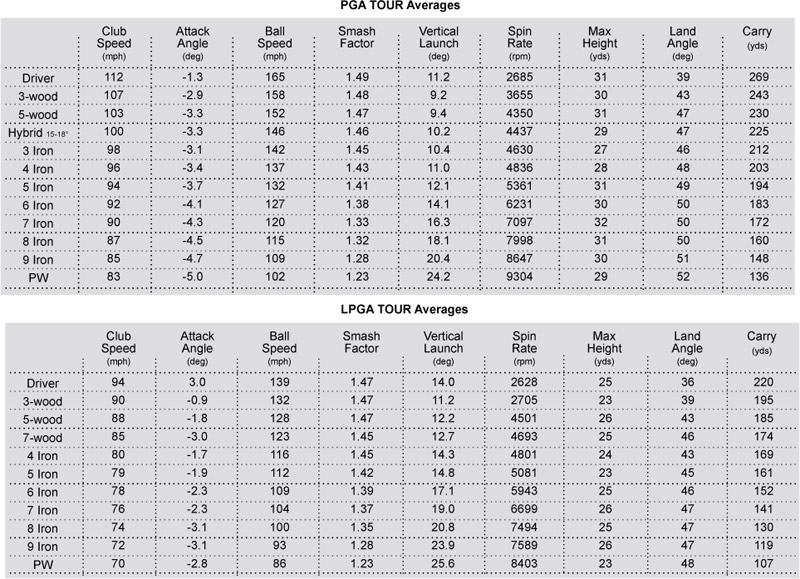
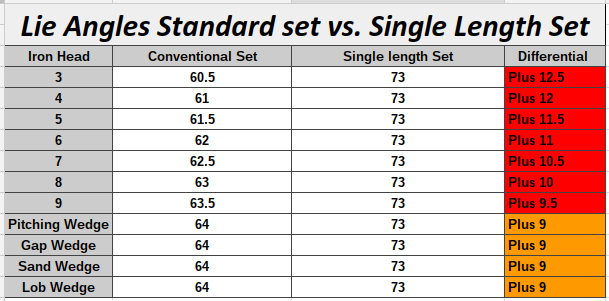
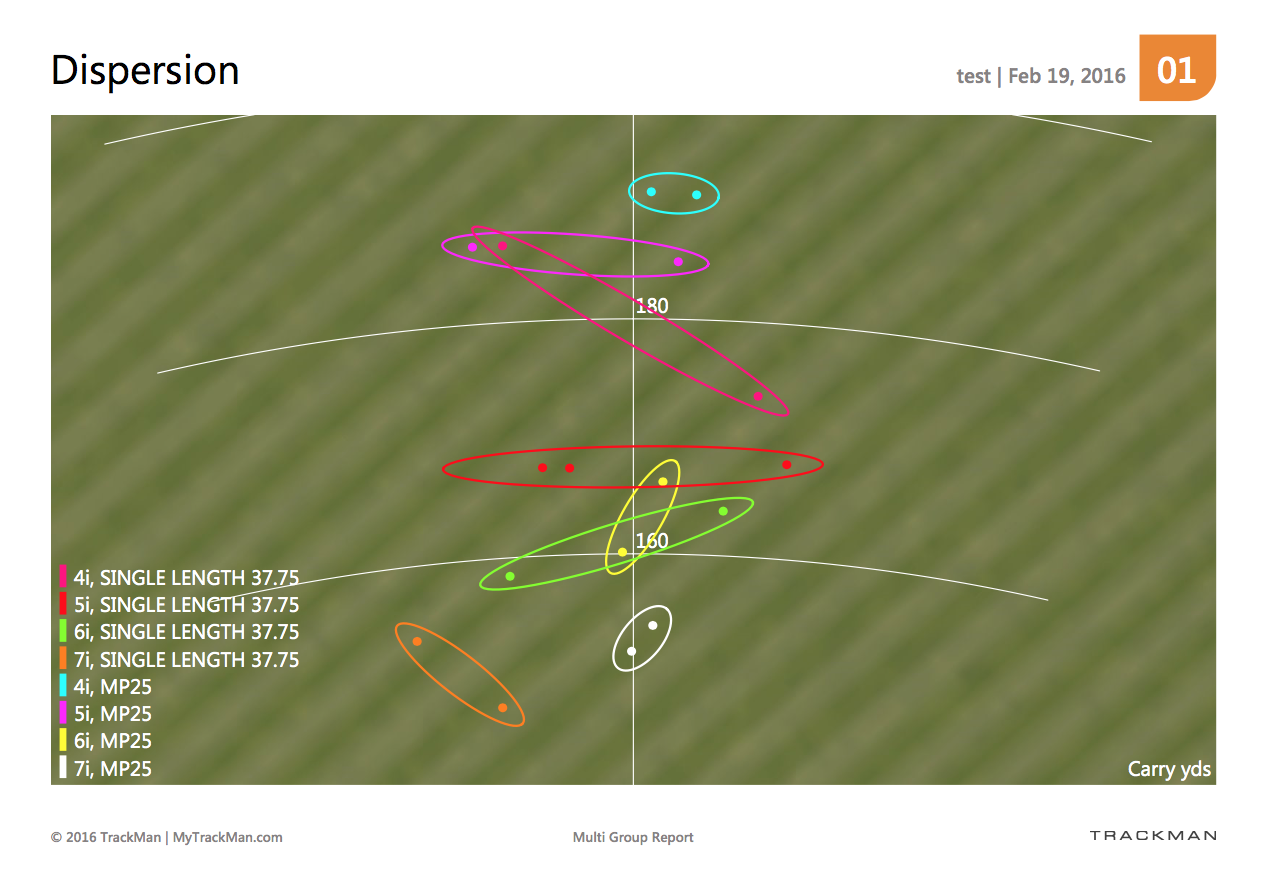



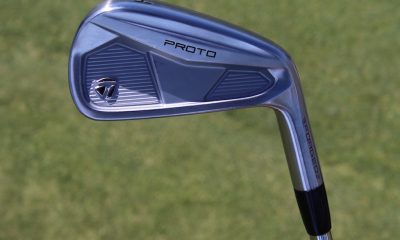

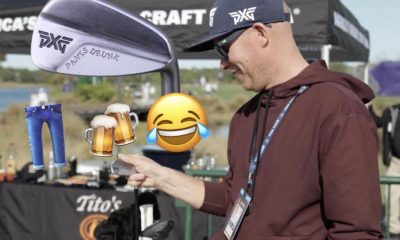

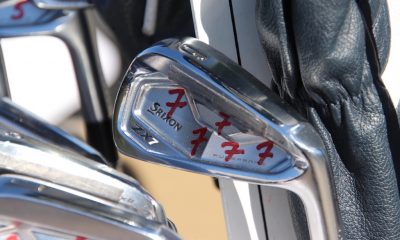





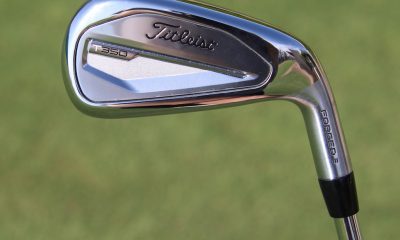
















Bruce Gerhold
Mar 18, 2016 at 1:58 pm
I used conventional club heads and fabricated a set of MOI matched clubs using a 2 length concept. This could be an alternate set that a player would find useful: I have played these for several months no plans to return to variable length, variable weight clubs.
I hold advanced degrees in Mechanical Engineering where I studied the science and mathematics of moving bodies. My career was in R&D work so tinkering with club fabrication is a natural. I’ll outline my fabrication below.
The clubheads are a cavity back design with and undercut behind the face ( Hireko Prophet CB cast perimeter with a forged, hardened stainless face Note the lofts are 1 club number lower than conventional to artificially add length but I refer to conventional loft club numbers below. http://www.hirekogolf.com/golf-components/clubheads/golf-irons/dynacraft-prophet-cb-iron-clubhead.html ). I selected these based on excellent feel of the forged face inserts and the undercut offers a convenient place to add weight that is well supported mechanically and will remain on the club head. The 2, 3, 4, 5 irons are same length, same shaft, same shaft trim (5 iron), same grip. I used two techniques to add weight to the club heads so they all equaled the 5 iron ( 263 g) : first, I mixed tungsten powder and shafting epoxy forming a self leveling mix, then put the mix in the cavity allowing it to settle to the bottom of the undercut and distribute evenly. When greater than 10 grams is required, I used 1/4 oz “egg” shaped lead fishing sinkers that were flattened to fit into the undercut – one in the toe and one in the heel. I then used the tungsten powder + epoxy to trim the weight and pot in the lead pieces. Both methods function well with no weight lost while playing and practicing. The long irons are 37 inches long.
The 6, 7, 8, 9 are made similarly with weight equal to the 8 iron ( 284 g ), shaft trim of an 8 iron and no weight on the 9 iron (simply made it 3/8 shorter for constant total club MOI). The short irons are 36 inches long. Since the short irons are shorter, but with increased head weight, the club MOI equals that of the long irons as measured with a pendulum technique. Note: the MOI is the moment of inertial of the entire club about the point between the hands (pivot point for club release which is what generates speed). The concept of swingweight is not supported by science and I (and many others) take as meaningless.
I find that even though I have 2 club lengths, the ball position is roughly the same for the 2 lengths with the longer clubs played one ball forward of the short clubs.. The common set up tremendously simplifies your game and leads to solid iron play. I flattened lie angle somewhat on the 5,4 and 8,9 but hesitated to bend too much because they are a cast body (2 degree max bending recommended). My 2 length clubs play just fine with minimal lie adjustments because the 2 lengths effectively give a lie adjustment.
My results show NO SHOT DISTANCE PROBLEMS. The length of a shot depends on club loft, club momentum (speed times MASS), and hitting the sweet spot. The added club head mass compensates for the shorter shaft, and I hit much more solid shots due to a controllable club length. 9 iron 120 and 2 iron 195 with normal type spacing for the intermediate clubs.
Lawrence Savage
Mar 18, 2016 at 1:01 pm
I bought a set of 1 Iron clubs because I thought it sounded like a really good idea. These were the problems I experienced:
1. The look on some clubs (3i, 4i and particularly wedges) was a bit off putting
2. I hit shorter shots in general, even though the lofts were nearly identical to my previous set. This was an absolute confidence killer. My swing speed is very middle of the road and I found that 3i and 4i were barely longer than 5i
3. I found the shafts in the wedges a little bit whippy, which may have contributed to reduced distance
4. The larger grips took a bit of getting used to, and I went from hitting a relatively predictable draw to an semi-controlled fade
5. Chipping was much harder from Kikuyu grass because of the low bounce of 3° (except SW at 6°) – certainly it was awkward-feeling chipping with a 7i-length LW at first
6. The grooves absolutely mashed the golf balls covers. In fact if one were super particular it would be one shot one ball, so much was the scuffing. This was a real sore point since the ZAR:USD exchange rate has made decent balls very expensive now
7. I went out six shots on handicap over five months – this was the death knell for me
I eventually went back to my old set and after a year I recovered my old form, in fact I reached my lowest hcp. It was a really expensive experiment, but super glad I tried it. Maybe when I’m older I would consider them again.
Ash
Mar 18, 2016 at 12:52 pm
The article ‘borrows’ heavily from members comments in the forums. A key point left out is that Bryson D, with Edel Golf, have adjusted heads so that the weights are IDENTICAL. Missing that vital point renders this article worthless.
Gisle Solhaug
Mar 17, 2016 at 10:25 am
The advantage of single length sets of irons is that your muscle memory will only have to learn one swing for your set of irons rather than one swing for each club. The same can be achieved on a standard set of golf clubs by optimizing the weight of each club by adding a specific weight to the grip end of the club. As the ball position and club length differ on a traditional set, so must the weight of each club. The calculations to obtain this exact weight is complex and involves building a computer model of your body swinging each of your clubs. You will then have the same swing for every club in your bag, except the putter of course. By making every club the same length, the ball position will be the same for every club at setup. Therefore, the clubs will be perfectly matched when they all have the same weight and MOI. And they will all have the same Swingweight, for those of you that care about that. The disadvantage of a single length set of irons is that you still need to apply a different swing for all the other clubs in the bag. What if you could have the same swing for all the clubs? That would make the game a lot easier. Those who are interested can learn more at http://www.rational-golf.com
Large chris
Mar 18, 2016 at 1:47 pm
Not according to the book ‘physics of golf’ by Jorgenson as referred to by Dave Tutelman.
Perfectly balancing a conventional 1/2 inch progression set of irons requires specific weights added both at the butt and midway down the shaft. It can’t be done by just adding different weights at the butt only, as it is not possible to equalise the first, second and third moments of the club without adding weights at the midpoint.
Also you seem to be suggesting you can achieve the same swing with different length clubs…. Patently impossible as the lie angle is changing ie the angle your wrists are pointing at to ground out the club.
KK
Mar 16, 2016 at 7:56 pm
Very interesting but I do agree this this probably for the higher swing speed golfer. Maybe two lengths for slower swing speeds? That would be a nightmare for fitters, lol.
Tony Wright
Mar 16, 2016 at 6:59 pm
Thanks for the informative article Ryan. You mentioned Tom Wishon’s single length iron design. I know that he worked for 2 years to develop it, in partnership with a very good European player. It will be very interesting to see what happens with his design once it gets into the hands of golfers through custom club fitters. I know that he has already sold out 4 orders of single length iron heads through his supplier – the first shipment of heads from Tom to custom fitters will happen sometime later in March, and the 4th set of orders will not occur until sometime in June. None of this says that single length is going to catch on – and Tom himself says it will not be for everyone – but we will see!
Snowman9000
Mar 16, 2016 at 1:25 pm
Regarding your dispersion graphic: At least one of those club numbers should have been effectively the same in both sets. Maybe the 5 iron, maybe the 6. Yet every SL club was worse. Are you comparing an ill-fitted SL set to a well-fitted conventional set?
BTW I don’t disagree with your assessment of the obstacles involved. I have custom made 3 SL sets. Even going so far as to remove or add weight in the right places as to improve the flighting of the irons. My last set was my best, and it’s pretty good. But I still find that the “short” irons (9 & wedges) fly too high. I feel it’s because the attack is shallower. My irons are only 6 iron through wedges, so the rest of the objections don’t really come into play. I can see a 5 iron, but I can’t see any reason today for a recreational golfer to play a 4 iron, no matter the length. So for 5 or 6 irons through wedges, it’s not that hard to do, and there are definite benefits in consistency, once the right fitting is found.
With an SL set, you don’t have to fret about whether to match the clubs via swingweight, or MOI, or MBI, or balance point, etc. Which is good, because some golfers do better with descending swingweights, some with steady swingweights, some with ascending weight shafts, some with constant weight shafts, some with unitized (descending weight) shafts, etc. But the amount of testing, and of required discernment ability by the fitter and golfer, and randomness of swings during fitting, make it extremely unlikely that the golfer comes out of the fitting with the true right heft and balance for him, throughout the set. MAYBE for the test club, yes. Hopefully so.
In the SL set, all that goes out the window. If the test club is truly a good fit, so are the others.
Again, I admit that this has to be balanced against the downsides, which are distance gapping and flighting. Many golfers, if they played an SL set that truly matched their swing, might find better results even despite the gapping and flighting issues. Might.
Jason
Mar 16, 2016 at 12:55 pm
Golfers are funny. Every top 100 player in the world uses a standard set of clubs and some guy shows up out of nowhere (albeit BC is a great golfer and he obviously has had tremendous success) with a single length set and now everyone is considering changing years of familiarity for them. The lifelong equipment search for golfers continues…
Robert A Parolisi
Mar 15, 2016 at 7:37 pm
Add tape to build up the taper in the shaft, then grip down on the iron.
Al
Mar 15, 2016 at 3:18 pm
I’ve tried to do this with 2011 Tmag tour preferred MC (they have exchangeable weights and ebay allowed for a variety of options), I went with a lighter shaft Nippon 950gh HT. Basically, I had the 8-LW the same length. The 3,5 and 7 same length, didn’t use the 4 and 6 for gapping purposes. Had the 3 bent to 20, the 5i to 25 and 7i to 30. I added a heavier weight plate to the back as well as brass shaft tip weights. I was able to get them to C9-D2. Overall it was fine, I actually had some solid rounds and scored well too. Mentally I struggled looking down at the 3 and how short it was. I played the 8-LW at a length of 35.5″ and 3-7″ at 36.5″. Unfortunately I reverted back to normal lengths. I regret it now and wish I would have stayed with it longer. I have another set of shafts I can play with if I get the itch.
Scooter McGavin
Mar 15, 2016 at 12:56 pm
Sounds like something you’d need to go to a specialty shop for, because I doubt the local Golfsmith or Golf Galaxy would have the equipment or know-how to accommodate.
Bob
Mar 15, 2016 at 11:23 am
I’ve known Ryan for many years and he knows the mechanical aspects of club building as well as anyone I’ve met in my 37 years in and around the golf business. He an excellent synopsis of the positive and negative aspects of the single length approach, IF in the hands of an athletic player like Dechambeau.
TOM
Mar 15, 2016 at 10:49 am
the last paragraph sums it all up.
Ryan
Mar 15, 2016 at 10:46 am
I’m not quite ready to switch to a single length set of irons, but what do you think about a single length for wedges? It’s something I’ve been considering for awhile.
devilsadvocate
Mar 15, 2016 at 2:54 pm
Single length wedges are the norm on tour… Highly recommend not only single length wedges but single swing weight , total weight, and lie angle throughout your wedges… Only difference would be loft (obviously) and bounce… Then when you practice short game you develop a consistent bottom of the arc with your wedges… Kind of important haha
Aaron
Mar 15, 2016 at 3:33 pm
I have played my wedges (46,50, 55, 60) at the same length (off the pw) for years. The consistency is definitely easier to have when they all setup the same. It will feel only a tad odd at first on your lob wedge when you are gripping it normal and you will gain some extra yardage in that club as well, but I have found it to be easier to control them because the setup and feel is the same throughout. I don’t know that I would go to a single length set though… The idea of increasing length shafts allows you to have an increased swing speed as you go towards the long irons without the addition of actually swinging harder. The other thing that comes into play is “working the ball”. The flatter lie angle on the lower lofted clubs makes it easier to create draws and fades. I tend to change my swing quite a bit to suit the shot shape I am attempting and I don’t play the robotic swing style like Bryson. If you are someone who views golf in straight shots and the same swing as much as possible in a round I think the single length set could be advantageous.